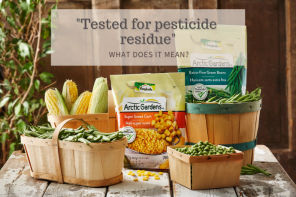Mistakes about food storage
Everyone makes mistakes when it comes to storing food. Sometimes, you use an inadequate container, so you think the food will be good for lunch the next day, even though it’s already lost some of its freshness. Other times, you’ll freeze a big batch of food thinking it’ll come in handy for dinner down the road. Then three months later, you feel guilty for throwing it out because you’ve forgotten about it…
But there’s a good reason why people make these kinds of mistakes: storing food is complicated! We’ll share a few tricks with you so you don’t fall into some of the most common traps.
1. Putting food in the wrong place
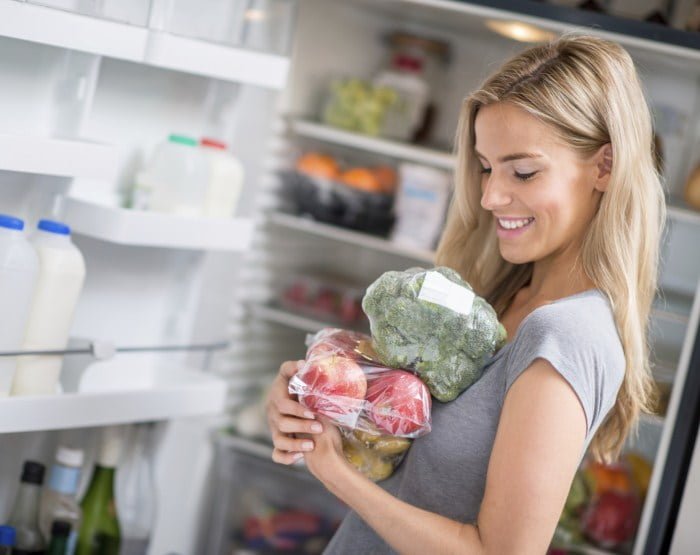
You might be surprised to learn that many of us have probably never put certain foods in their proper place.
Food that is put in the wrong place
● Nuts: ideally in the fridge
● Cucumbers: on the counter
● Avocados: on the counter
● Flour: in the fridge
Yup, it’s better to store nuts in the fridge than in the cupboard. Their oil can make them taste bitter if they stay at room temperature. Cucumbers need to be on the counter as the cold degrades them more quickly. Also, avocados have to stay on the counter to ripen. What about whole wheat flour? It’s best refrigerated after three months. Now you’ll never store your groceries the same way again!
You can’t say you’re an expert in storing food right away. First, you need to know that food has a specific place in the fridge. In fact, fruit shouldn’t be piled up in the drawer. Leave a little space around each piece so that they don’t touch each other and ripen prematurely. The same principle applies to the freezer: leave space between products to allow air to circulate. Be careful, though. Not all food can be frozen. For example, mayonnaise, fried food and cream don’t freeze well.
2. Storing food in the wrong container
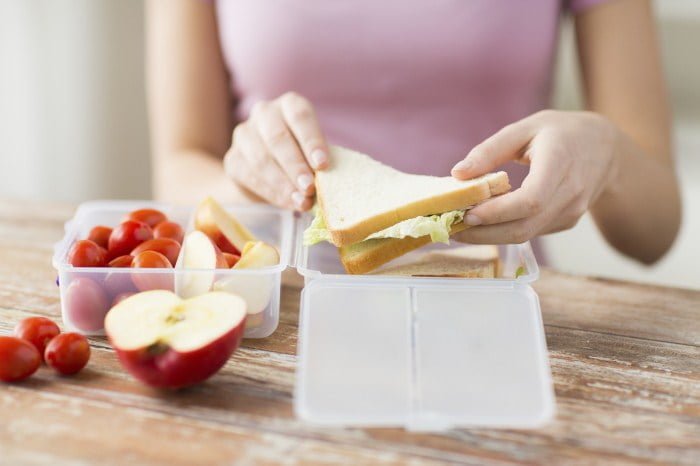
The containers you use will have a real impact on food preservation. If the contents aren’t sealed well enough, your leftovers won’t last a day before they change drastically.
For freezing and refrigerating
Airtight containers protect food against freezer burn. The plastic packaging from the grocery store doesn’t seal well enough to conserve meat in the freezer, so next time, replace original packaging with resealable bags made for the freezer. This will protect your food, but there is still one more thing to check: Are your bags made specifically for the freezer? There are many kinds of resealable bags on the market that store food. Some are for storing food and others are for freezing it. Read the box. Either way, it’s clearly indicated.
Flexible bags store liquids and solids equally well. However, you have to remove as much air as possible before putting food in the cold. And you can only use bags once as plastic degrades after a few uses. Rigid containers can be reused, but you have to check to make sure they can be used in the freezer as well. Normally, there is a snowflake logo on the bottom of the container. We recommend rigid containers for liquids because they rarely leak.
For storing
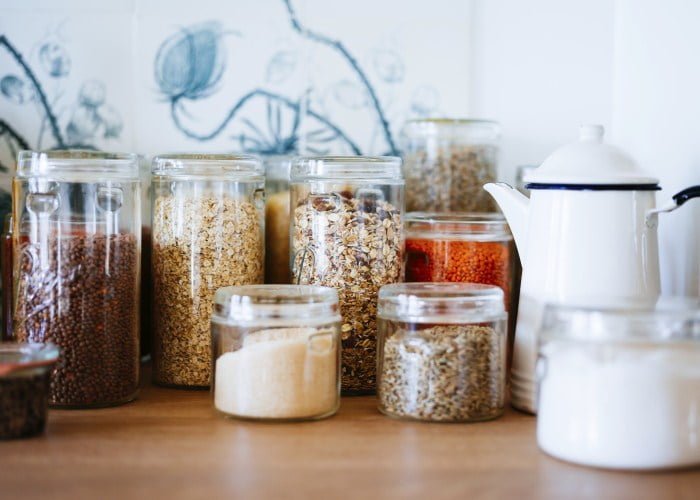
You shouldn’t think about containers only when you want to freeze something. Dry food has to be stored in airtight containers as well. Your food will be protected from moisture. Everyone hates eating stale, tasteless cereal… But if you store it in an airtight container, it’ll keep longer and stay crunchier!
Food that benefits from being stored well
● Cereal
● Crackers
● Cookies
● Flour
● Sugar
Brown sugar is a bit finicky. It can be stored in a container, but keep it in a bag, otherwise it’ll get hard as rock!
For the long term

Mason jars are another container to consider when storing food. Canning also conserves different kinds of food really well. Think homemade jams or spaghetti sauce. Take advantage by doubling the recipe. Spaghetti sauce will be ready for weeknights when you don’t always have a lot of time (or energy, you have to admit) to cook!
When properly sealed, canned food lasts between 12 and 18 months. How do you make sure it’s properly sealed? Once cooled, lids make a sound when they retract, like a little pop! If gas bubbles appear in your preparation, it’s because it wasn’t cooked long enough. In this case, the product cannot be consumed. Canning techniques take time to master and come slowly.
Despite the fact that you need patience, canned food keeps its nutritional value for a long time. Once you’ve made your preparation, the reward is showing off your pretty jar of jam to the whole house! Your recipes will be a hit and ready for everyone to enjoy. The other benefit of choosing canning is you can enjoy goods even when they’re out of season.
3. Wasting nonetheless
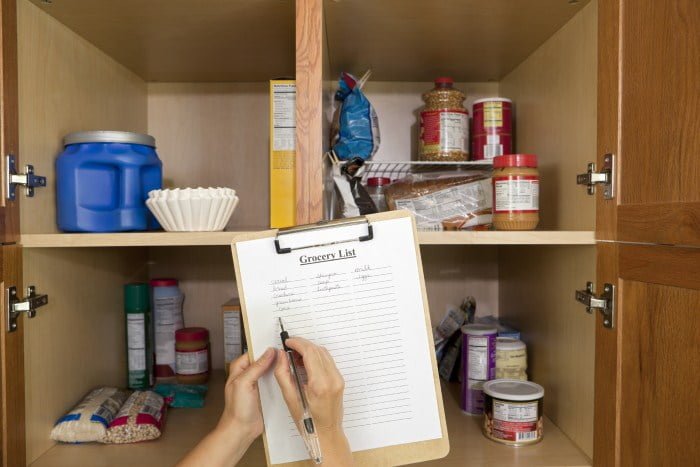
Food is stored in so many places (fridge, cupboards, basement or second freezer) that you often forget about it, so end up throwing a lot of it out.
To prevent waste, take inventory of all the products in your cupboard and put it in a table that you can fill out by hand. This way, you can easily change the list! To help get through your reserves, make a menu for the week with what you already have on hand. Look for flyer discounts only after you’ve checked your list.
Rotating canned goods
Even if they’re not on your grocery list, you’ll buy some products in case you need them later. Too often, however, thinking ahead doesn’t do any good. You forget that they’re in the cupboard and next thing you know, it’s too late to use them.
To minimize this waste, rotate products when storing your groceries. If you already have a can of soup, put the newer one underneath it so you’ll consume the older one first.
Store according to consumption
Another tip is to freeze leftovers in individual portions. This way, they can be thawed one at a time as needed. The same goes for meat. As soon as you come back from the grocery store, separate meat by how you’ll consume it in the future. This will help prevent tackling an entire value-pack of chicken breast all stuck together when you really only want one.
4. Not understanding expiry dates

Every food item has its own characteristics as to how long it can be stored and where. What’s good for one item isn’t necessarily good for another. Also, rules change if the food is cooked or raw, in a sauce or not, frozen or thawed…
For example, cooked chicken keeps for three or four days in the fridge, but for only one or two days when it’s in a sauce. Fatty fish like salmon keeps for one or two days in the fridge and two months in the freezer, whereas lean fish like tilapia keeps refrigerated for up to three days and frozen for up to six months… These food characteristics mean a lot when it comes to storage life!
Do you always have to rely on the expiry date?
Expiry dates are often a good indicator. However, they’re not always something agreed upon within the food industry. You’ve probably heard that yoghurt, for example, is still good even after it’s past the best before date.
In truth, there is a simple way to know if you can or cannot eat food once it’s passed the expiry date by a few days. Products have two types of dates. First, there’s the “expiry date” which is the deadline for consumption. In this case, you shouldn’t take a chance and just throw it out. On the other hand, there’s “best before” which is, in fact, the optimal date. Food is better and fresher before this date, but is still consumable after. There’s a big difference!
Storage life for vegetables
Fresh veggies don’t keep for long. To address this problem, opt for frozen vegetables that keep all of their freshness for up to three weeks! If you choose fresh veggies, you have to know their best before date because it’s not written anywhere. Never rely on just their smell or appearance to determine if they’re still consumable as this can lead to error on our part.
| Food | Refrigerator (4° C) | Freezer (-18° C) |
| Tomatoes | 1 week | 1 year |
| Cucumbers | 1 week | _ |
| Mushrooms | 5 days | 1 year |
| Asparagus | 4 days | 1 year |
| Cauliflower | 6 days | 1 year |
| Carrots | 3 months | 1 year |
| Celery | 2 weeks | 1 year |
| Cob of corn | 2-3 days | 1 year |
| Spinach | 4-5 days | 1 year |
Storage life for meat
For meat and fish, you can rely on the expiry dates printed on the package. However, if they’re frozen for several weeks, it’s difficult to know if they can still be eaten, so it’s important to know what their storage life is.
| Food | Refrigerator (4° C) | Freezer (-18° C) |
| Cooked chicken | 3-4 days | 1-3 months |
| Whole cooked ham | 7-10 days | 1-2 months |
| Cooked meat | 3-4 days | 2-3 months |
| Cooked crab | 1-2 days | 1 month |
| Shucked oysters | 10 days | 2-4 months |
| Oysters in the shell | 2-3 weeks | _ |
| Shucked mussels | 1-2 days | 3 months |
| Mussels in the shell | 2-3 days | _ |
| Scallops | 1-2 days | 3 months |
Storage life for prepared dishes
The most difficult thing to know is if an already-prepared dish can still be eaten after a few days in the fridge. The many ingredients complicate matters!
| Food | Refrigerator (4° C) | Freezer (-18° C) |
| Pasta without sauce | 3-5 days | 3 months |
| Meat sauce | 3-5 days | 4-6 months |
| Quiche and pasta | 2-3 days | 3 months |
| Soups and chowders | 3 days | 2-3 months |
| Cooked rice | 5-6 days | 6-8 months |
| Sandwiches | 1-2 days | 6 weeks |
| Cooked legumes | 5 days | 3 months |
| Casseroles | 2-3 days | 3 months |
| Bread | 7 days | 3 months |
To avoid learning the different dates by heart, print this storage and temperature chart and post it on your fridge door.
Leftovers must be refrigerated in under than two hours. There’s no question that future lunches stay out too long on the stovetop. As soon as you’ve taken your last bite, you should start putting away the leftovers. At the same time, you should also label the contents of the container and put the date the dish was made to know if the meal is still edible even a few days later.
Some food needs to be managed a lot less because it keeps longer. Dry mustard keeps for three years and sugar and vinegar for two years! Less worry from that standpoint, but you can’t forget when the time comes.
5. Refreezing food
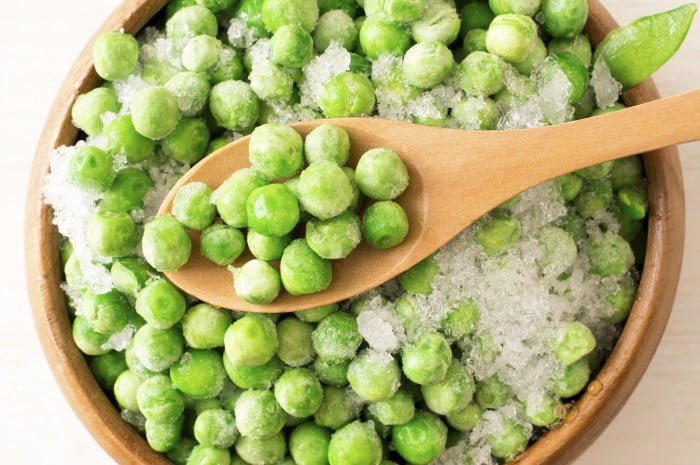
Never make this mistake. Your health depends on it! Refreezing anything increases the chance of bacteria growth. This means eating a refrozen product can really make you sick. You can avoid food poisoning by remembering this: never freeze a product twice!
If you want to put meat back in the freezer, it has to be cooked beforehand. Another exception: you can refreeze something only if it’s defrosted a little, meaning if there are still ice crystals. Last piece of advice: ideally, defrost meat in the fridge and not on the counter because bacteria grows as soon as the temperature is above 4° C. This is a situation you definitely want to avoid!
This is a lot of food storage information to digest. You should make every effort to change even a few habits to avoid making these mistakes. Your health, quality of food and the amount you save depend on the way you store your food. These are all good reasons to pay close attention. So how do you manage your provisions? Let us know your tricks when it comes to storing food!






